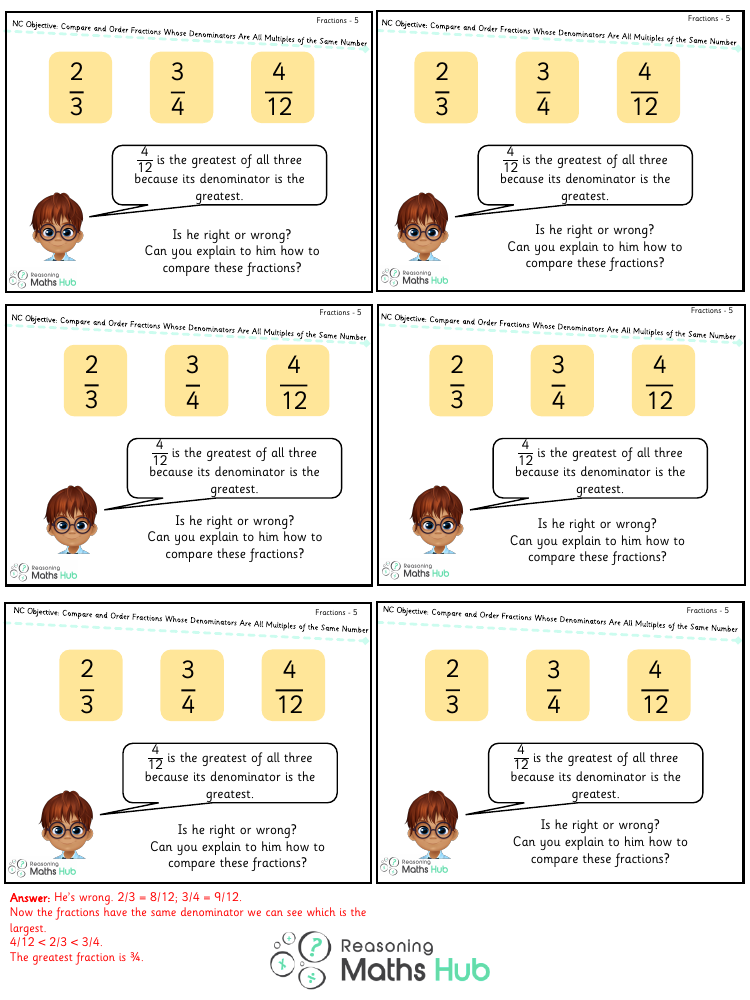Compare and Order Fractions Whose Denominators Are All Multiples of the Same Number 2 - Reasoning

Maths Resource Description
When comparing fractions to determine which is the greatest, a common mistake is to assume that the fraction with the largest denominator is the largest fraction. However, this is incorrect. To accurately compare fractions whose denominators are multiples of the same number, it is essential to convert them to have the same denominator. For example, to compare 2/3 and 3/4, we can express both fractions with a common denominator of 12, since 12 is a multiple of both 3 and 4. By converting 2/3 to 8/12 and 3/4 to 9/12, it becomes clear that 3/4 is the larger fraction because 9/12 is greater than 8/12. The correct order from smallest to largest is 4/12, 2/3, and then 3/4, with 3/4 being the greatest fraction.
It is essential to understand that having a greater denominator does not make a fraction larger. In fact, within the same numerical value, the larger the denominator, the smaller the individual parts of the fraction. Therefore, the claim that a fraction is the greatest because its denominator is the greatest is a misconception. To help someone compare fractions correctly, you would explain that they need to find a common denominator for the fractions in question, then compare the numerators to see which fraction represents the larger portion of the whole. This process will accurately determine which fraction is the greatest.
